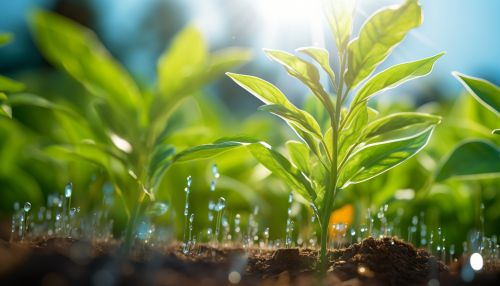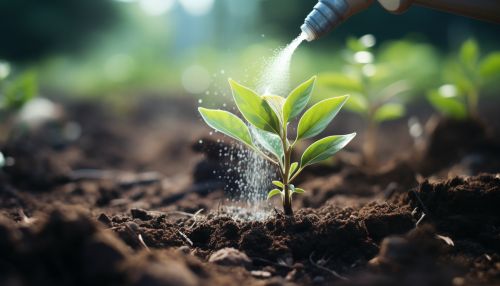The Biological Mechanisms of Plant Allelochemical Production
Introduction
Allelochemicals are secondary metabolites produced by plants that influence the growth and development of neighboring plants. These chemicals are a part of the plant's defense mechanism and play a crucial role in plant-plant interactions. The production of these chemicals is a complex process involving several biological mechanisms.


Biological Mechanisms of Allelochemical Production
The biological mechanisms involved in the production of allelochemicals are intricate and multifaceted. They involve various processes such as biosynthesis, transport, and release of these chemicals into the environment.
Biosynthesis of Allelochemicals
The biosynthesis of allelochemicals occurs in different parts of the plant such as roots, leaves, stems, and seeds. This process involves various enzymes and genes that regulate the production of these chemicals. The biosynthesis of allelochemicals is often triggered by environmental stressors such as drought, high temperature, and pest attacks.


Transport of Allelochemicals
Once the allelochemicals are synthesized, they are transported to different parts of the plant through the xylem and phloem. The transport of these chemicals is facilitated by various transport proteins present in the plant cells.
Release of Allelochemicals
The release of allelochemicals into the environment is a critical step in plant-plant interactions. These chemicals are released through various mechanisms such as root exudation, volatilization, leaching, and decomposition of plant residues.


Factors Influencing Allelochemical Production
Several factors influence the production of allelochemicals in plants. These include environmental factors, genetic factors, and plant health status.
Environmental Factors
Environmental factors such as temperature, light intensity, and soil conditions significantly influence the production of allelochemicals. For instance, high temperatures and intense light conditions can trigger the production of these chemicals.
Genetic Factors
Genetic factors also play a crucial role in the production of allelochemicals. Different plant species produce different types of allelochemicals due to variations in their genetic makeup.
Plant Health Status
The health status of the plant also influences the production of allelochemicals. Plants under stress conditions such as drought or pest attack often produce more allelochemicals as a defense mechanism.


Role of Allelochemicals in Plant Interactions
Allelochemicals play a significant role in plant-plant interactions. They can have both positive and negative effects on neighboring plants.
Negative Effects
Allelochemicals can inhibit the growth and development of neighboring plants, a phenomenon known as allelopathy. This is a common strategy used by plants to reduce competition for resources.
Positive Effects
In some cases, allelochemicals can also have positive effects on neighboring plants. For instance, they can stimulate the growth of beneficial microorganisms in the soil, which can enhance nutrient availability for other plants.


Conclusion
The biological mechanisms of plant allelochemical production are complex and involve various processes such as biosynthesis, transport, and release of these chemicals. These mechanisms are influenced by several factors such as environmental conditions, genetic makeup, and plant health status. Understanding these mechanisms can provide valuable insights into plant-plant interactions and can have significant implications for agriculture and ecosystem management.
